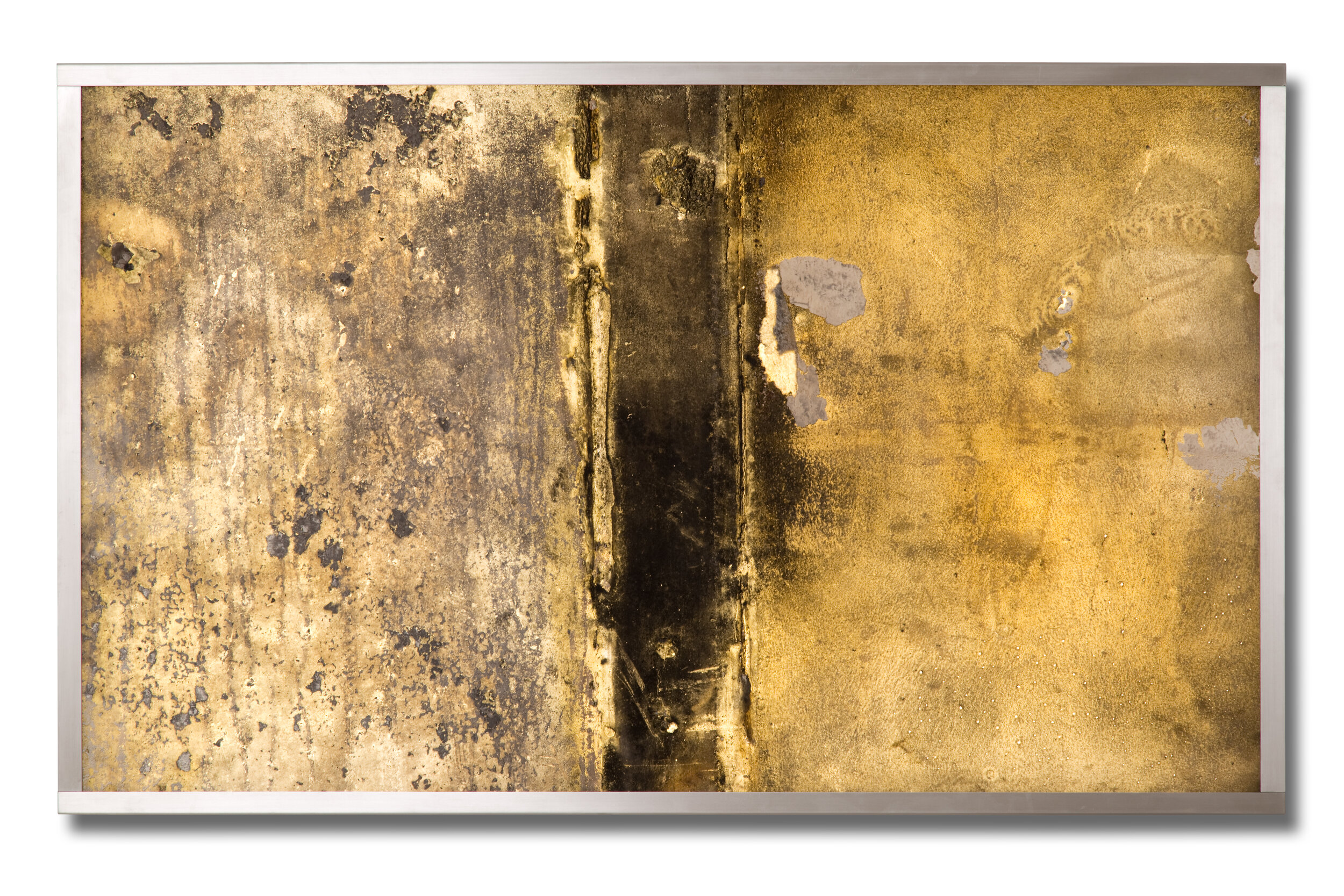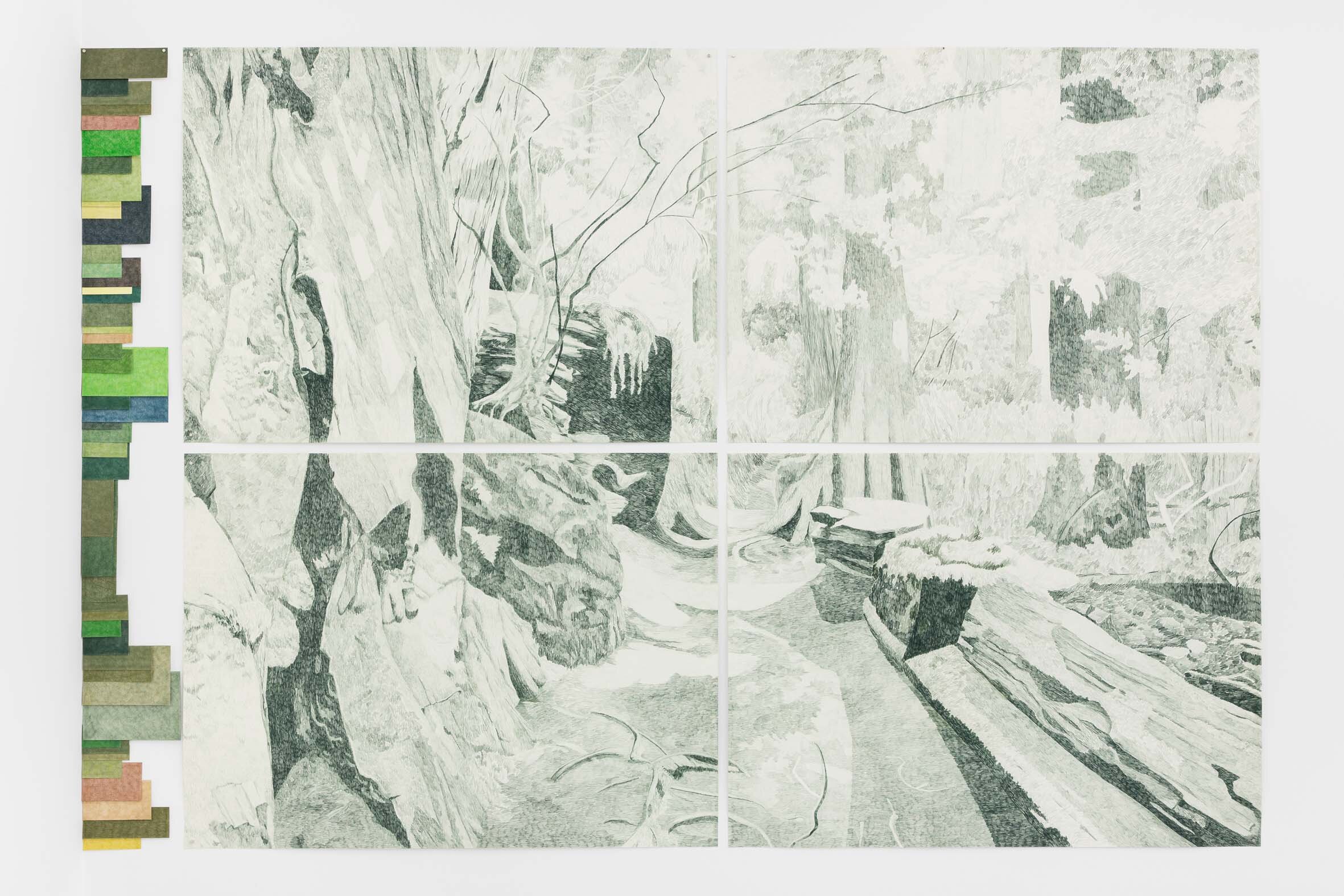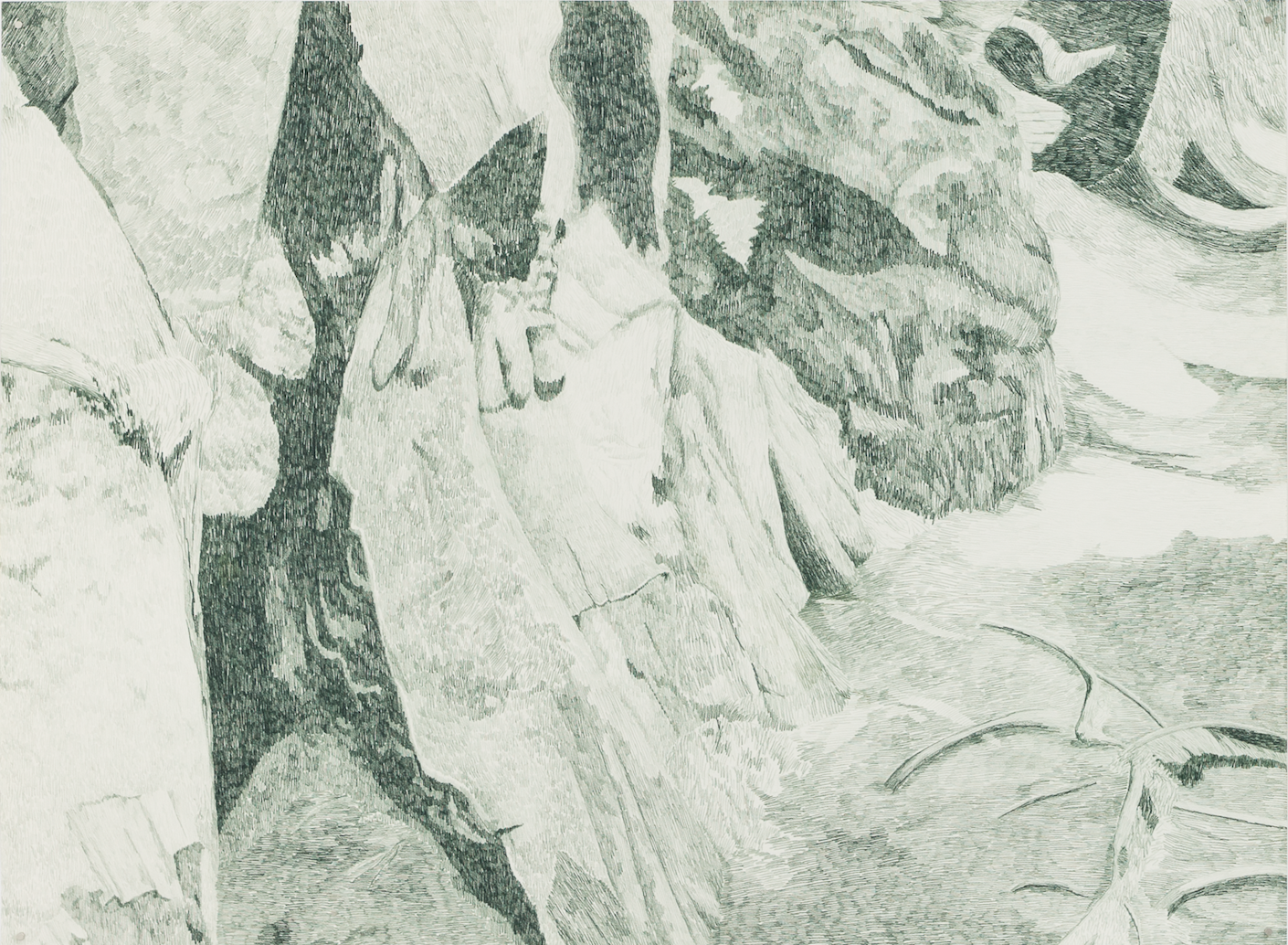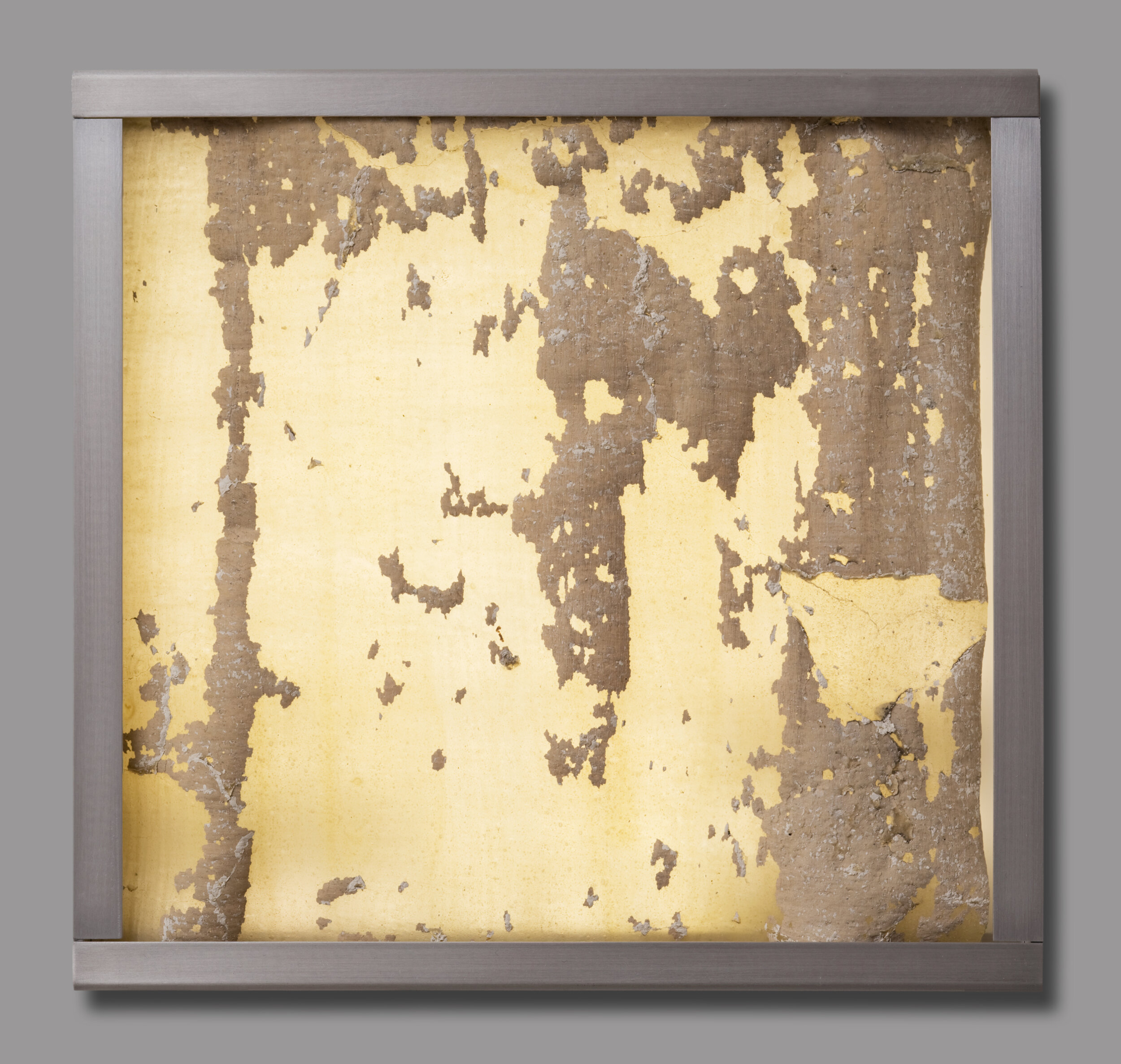Nature’s Afterlives:
Gabriela Albergaria & Jorge Otero-Pailos
Curated by Courtney Skipton Long, Ph.D. Assistant Curator of Prints and Drawings at the Yale Center for British Art.
November 13 – December 20, 2019
Opening reception November 13, 6-8pm
Special event for Tribeca Art Night, November 14, 6-9 pm / Extended opening hours, November 15, 10-8pm.












SAPAR Contemporary is pleased to present Nature’s Afterlives, the first shared exhibition of Gabriela Albergaria (Portugal/UK) and Jorge Otero-Pailos (Spain/US). This exhibition brings together two artists whose work focuses on nature and the associated themes of growth and decay, history and memory, continuity and change. Albergaria’s large-scale drawings and photographs of gardens and forest vegetation expose complex natural structures in meticulous, meditative detail. From grooves of tree bark and stratified layers of stone, to carefully catalogued sequences of the colors within the lifecycle of a decomposing leaf, Albergaria creates and represents manipulated environments that are both immersive and intimate. While Albergaria reveals natural structures, Otero-Pailos’s work investigates the intersection of nature and architecture. Using liquid latex as a form of conservation technology, Otero-Pailos removes microscopic deposits of pollution from buildings and traps them in sheets of translucent rubber. Once removed from the building’s façade and displayed, these sheets function as memories in reverse, exposing to light decades of accumulated dust, as well as humanity’s interaction with, and impact on, the environment. Together, Albergaria and Otero-Pailos seek to engage the viewer in the pattern, rhythm, and stories of nature. Both capture the processes of time, the scientific cataloguing of natural activities, and the relationship between humanity and the environment, forcing us to consider the concept of the Anthropocene as a distinct epoch in geological time. Engaging with the legacy of John Ruskin, the great nineteenth-century art critic and pioneering environmentalist whose 200th birthday is celebrated this year (2019), Albergaria and Otero-Pailos remind us that Ruskin’s proclamation that “if you can paint one leaf, you can paint the world” still rings true.
Albergaria’s photographs and drawings of gardens and forests and Otero-Pailos’s installations of latex sheets meshed with historic particles of dust put on display the overlooked details from nature, forcing viewers to see the world around them in new ways. Albergaria’s series Landscape in Repair represents fractured ecosystems in the process of healing. Breaking with conventional framing practices, Albergaria’s scenes are organized in unique compilations that seem to mirror the seismic history of nature itself. These multipart arrangements focus on aspects of things found in nature—a root, a tree trunk, a wooded path, a stony ravine—and she presents them on a monumental scale. When combined, these seemingly disparate details provide an immersive, felt experience of walking through sometimes recognizable, sometimes imagined landscapes. In this way, Albergaria’s pictorial environments are mythic in their presentation—filled with a sense of history, silence, wonder, and veneration—and they tell a story about the cyclical process of growth, decay, and regeneration. Through her representation of the landscape, one sees a world exposed and expanded beyond the normal field of vision to include constantly changing perspectives, shifting light, and patterns of foliage—all of which is handled by the artist as a reminder of how nature and the environment have been manipulated by human culture, defined and shaped both materially and conceptually by its needs and exigencies.
In his series of Distributed Monuments, Otero-Pailos addresses one of today’s most pressing environmental issues: pollution. Born from his series The Ethics of Dust, titled after Ruskin’s instructional manual The Ethics of the Dust(1866), Otero-Pailos’s Distributed Monuments offer a new way to think about how to clean buildings and preserve the layers of pollution coating their façades. Otero-Pailos’s Distributed Monuments are extracts from larger latex casts made at key cultural sites around the world, such as the Alumix building in Bolzano, Italy, the house of Louis Vuitton in Paris, France, the interior of the Norwegian Ministry of Petroleum and Energy in Oslo, Norway, and the interior of the plaster cast of Trajan's Column at the Victoria & Albert Museum in London, England, to name only a few. In Otero-Pailos’s casts, the latex takes on the role of surface and support, while the patterns of dust particles and shadows of dirt become the subject of the work. The pollution trapped on the latex surface creates a ghostly texture, much like drawing deposits of chalk, charcoal, or graphite on textured paper. These latex impressions, with their grimy, rough outer surfaces tell the story of industry, political upheaval, and environmental change in their very substance. In capturing the history of pollution, Otero-Pailos cleans the facades of buildings and preserves the history of the structure’s contact with the air, recasting the built environment into a new artistic form, free to tell its own story about the interaction of humans and ecology, architecture and the environment.
Together, these artists unearth the complex relationship between humanity and nature. Albergaria’s representation of growth and decay, of life and death, of tranquility and disruption, work together to show how nature and humanity are entwined. Humanity’s desire to manipulate and control the natural world underlies Albergaria’s work, which shows us how nature reacts against being dominated, managed, and cultivated. For Otero-Pailos, humanity’s exploitation of the natural world and its resources leading to extreme environmental damage offers a glimpse of nature’s revenge: a climate that is increasingly inhospitable to the very survival of human culture. Through their work, Albergaria and Otero-Pailos invite us to contemplate the force of humanity and the resilience of nature, and remind us of Shakespeare’s timeless paradox that life will be “consumed with that which it was nourish’d by.”
About Artists
Gabriela Albergaria is a Portuguese artist based in Lisbon and London. Albergaria's work involves one territory: Nature. A nature manipulated, planted, transported, set in hierarchy, catalogued, studied, felt and recalled through the ongoing exploration of gardens/cultural landscapes in photography, drawing and sculpture. The artist views gardens/cultural landscapes as elaborated constructs, representational systems and descriptive mechanisms that epitomize a set of fictional beliefs that are employed to represent the natural world. Gardens are also environments dedicated to leisure and study, cultural and social processes that produce a historical understanding of what is knowledge and what is pleasure. More generally, the images of gardens and plant species employed by the artist are used as devices to reveal processes of cultural change through which visions of nature are produced. Mediated by representation systems they generate different versions of what we see as landscape—itself a complex system of material structures and visual hierarchies, cultural constructs that define the framing of our visual field. Having completed a degree in Painting from the Faculty of Fine Arts in Porto, she held numerous residencies, such as Künstlerhaus Bethanien, Berlin (2000/2001) / Cité Internationale des Arts, Paris (2004) / Villa Arson, Centre National d’Art Contemporain, Nice (2008) / The University of Oxford Botanic Garden, in colla- boration with The Ruskin School of Drawing and Fine Art, Oxford (2009/2010) and Winter Workspace, Wave Hill Public Garden and Cultural Center, New York (2012), Residency Unlimited, New York, USA (2015), and Flora ars+natura, Bogotá, Colombia (2015)
Jorge Otero-Pailos (1971, Spain) is a New York-based artist and preservationist best known for making monumental casts of historically charged buildings. Drawing from his formal training in architecture and preservation, Otero-Pailos’ art practice deals with memory, culture, and transitions, and invites the viewer to consider buildings and functional objects as powerful agents of change. His site-specific series, The Ethics of Dust, is an ongoing, decade-long investigation resulting from cleaning dust and the residue of pollution from monuments such as the Doge’s Palace in Venice; Westminster Hall in the Houses of Parliament, London; the U.S. Old Mint in San Francisco; and Trajan’s Column at the Victoria & Albert Museum, London. Otero-Pailos’ works are to be found in the collections of SFMoMA, The Museum of London; The Ulster Museum, Belfast, Northern Ireland; The Whitworth, Manchester; The Glynn Vivian Art Gallery, Swansea; Kelvingrove / The People's Palace, Glasgow; and Thyssen-Bornemisza Art Contemporary in Vienna. He participated in the 53rd Venice Art Biennial (2009), and the Chicago Architecture Biennial (2017), among others.He is Director and Professor of Historic Preservation at the Columbia University Graduate School of Architecture in New York. He studied architecture at Cornell University and earned a doctorate in architecture at M.I.T.
About Curator
Courtney Skipton Long, Ph.D., is a curator and historian of art and architecture. She has curated exhibitions at the Yale Center for British Art in New Haven, CT, the Huntington Library and Art Museum in San Marino, CA, and the Bruce Museum in Greenwich, CT. Her publications investigate the intersection of architectural history and natural science from the nineteenth century to the present. She is currently the Acting Assistant Curator of Prints and Drawings at the Yale Center for British Art where she oversees the largest collection of British works on paper outside of Great Britain. After studying art history at Mount Holyoke College, she earned a doctorate in the history of art and architecture at the University of Pittsburgh.






